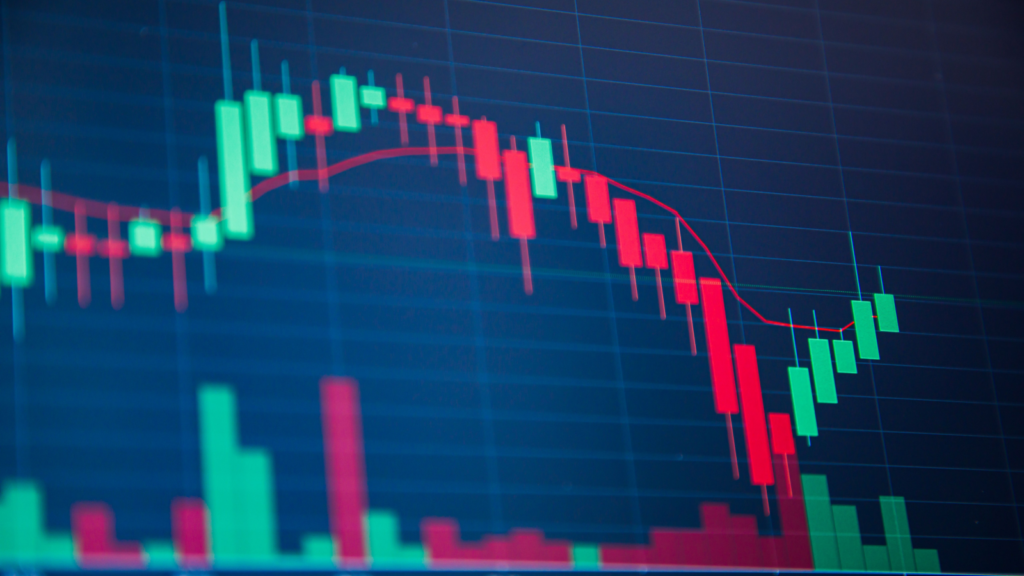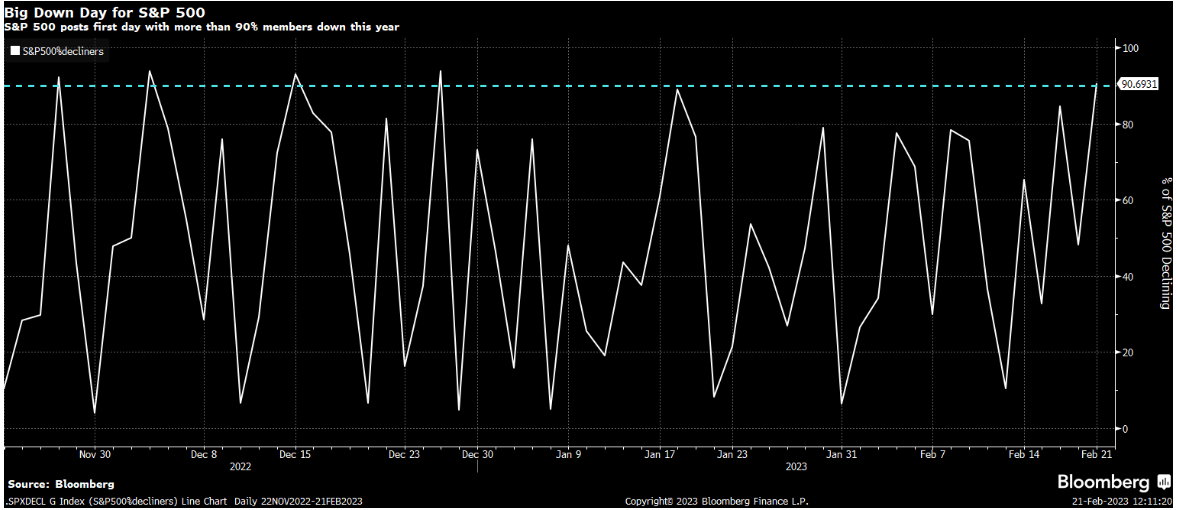Editor’s note: “Buy the Dip in a Down Market for Big Returns” was previously published in February 2023. It has since been updated to include the most relevant information available.
Feb. 21, 2023 was an awful day for stocks. And with the market down, investors get fearful.
The S&P 500 fell 2%, marking one of its worst days of the year so far. But it’s not the headline drop that was so nasty. A 2% drop is big but nothing too scary.
Instead, it was the underlying price action. Pretty much every stock – growth, value, cyclicals, defensives, tech, energy, etc. – was down. None were spared in the carnage!
That is, more than 90% of the stocks in the S&P 500 were in the red. Specifically, about 91% of stocks were down. It was the market’s first “90% down day” of 2023.
Big down days like that are scary because they make investors feel helpless.
Usually, in a down market, investors have stocks they can take shelter in. But 90% down days obliterate those safe havens, too. They make investors feel like everything is falling.
And we saw a day like that back in February.
Spooky – yet also very bullish.
Did you know that 90% down days are actually very strong contrarian bullish indicators?
That is, whenever the S&P 500 has a 90% down day, it tends to outperform over the next three, six, and 12 months. That is especially true whenever the S&P 500 has a 90% down day while in a bear market – as is the case now.
Here’s the data.
Buying into a Down Market
Over the past 25 years, the S&P has averaged three-month returns of 2%, six-month returns of 4%, and 12-month returns of about 9%.
But whenever the index has had a 90% down day, it usually rallies about 4% over the next three months, 6% over the next six months, and 12% over the next 12 months. The returns get bigger across the board by 200 to 400 basis points.
Those returns get even bigger when the S&P 500 has a 90% down day while in a bear market.
In that instance, the average three-month forward return is about 4%. The average six-month forward return is over 8%, and the average 12-month forward return is almost 25%.
In other words, history says down days are also a great buying opportunity before stocks shoot higher over the next three, six, and 12 months.
In fact, following a 90% down day in a bear market, 12-month forward returns are almost always significantly positive, going back to 1995.
The Final Word on Buying the Dip in a Down Market
So… are you going to buy the dip in stocks?
If not, maybe you should.
And if you’re now thinking about it, let me point you in the right direction. Because, while a down market can present buying opportunities, investors should be cautious and consider the health of individual companies and overall economic conditions before making investment decisions.
That’s hard, time-consuming work. But it’s what we specialize in, so you can be sure you’re investing in the right stocks at the right time.
On the date of publication, Luke Lango did not have (either directly or indirectly) any positions in the securities mentioned in this article.


